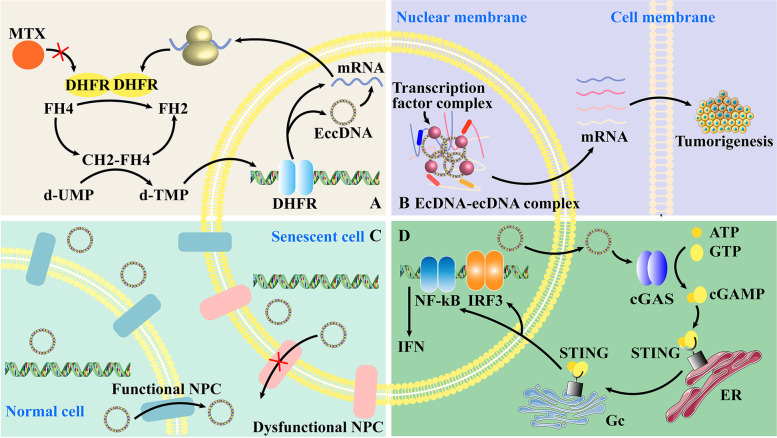Fig. 4.
The mechanism of eccDNA. A EccDNA amplifies the DHFR gene on the chromosome. Overexpression of the DHFR gene leads to a large amount of DHFR in cells; thus, methotrexate (MTX) cannot effectively prevent DHFR from participating in the interchange of FH2 and FH4, which convert d-UMP to d-TMP. The d-TMP is helpful for gene replication, leading to instability and mutation of the tumor. B Transcriptionally active ecDNAs are polymerized by the transcriptional complex and become enhancers that regulate transcription. This enhancer functions by binding to the relevant chromosomal genes, thereby activating the expression of genes associated with tumorigenesis. C In senescent cells, functional NPCs on the nuclear membrane tend to become dysfunctional, which means that cells are not capable of excluding eccDNA from the extranucleus. Gathering in the nucleus can largely be defined as a symbol of senescent cells. D EccDNA is manufactured, leaves the nucleus, and activates the cGAS protein in tumors. ATP and GTP thus form into cGAMP, combing with STING protein on the endoplasmic reticulum (ER), combining STING protein to change its position to the Golgi complex (GC). This whole process is named the cGAS-STING pathway. The chromosomal genes NK-κB and IRF3 are stimulated by this pathway, processing IFN and immune-related cytokines and then inducing the immune response in the body

